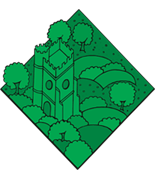Curriculum
English
Our structured and carefully planned approach to reading and writing equips our children to become confident and expressive readers and writers.
We believe in providing a rich and diverse curriculum. Our lessons, the books we read and the images we present reflects our diverse school community. We are aspirational for our children and support them so that they become successful, proud and ambitious learners who go on to experience a wide range of opportunities in their futures.
Reading
Our children benefit hugely from exposure to books from an early age. Right from the start of school at St Mary’s, opportunities are provided for children to engage with books that fire their imagination and interest. Our nursery is stocked with attractive and engaging books and the nursery staff create an environment that is rich in language. Children are also encouraged to choose and peruse books freely as well as sharing them when reading with others.
Our aims are for children to:
- gain strong phonics knowledge and good communication skills giving children strong foundations for future learning
- read fluently and with good comprehension by the time they leave primary school
- enjoy reading and do so with confidence, fluency and understanding
- have access to a range of cultural and inclusive texts that they can relate to and enjoy
- understand a range of text types
Our approaches to reading:
Phonics
Words are made up of small units of sound called phonemes. Phonics teaches children to be able to listen carefully and identify the phonemes that make up each word. This helps children to learn to read words and spell words.
At St Mary’s, we follow ‘Floppy’s Phonics’ throughout the Foundation Stage and Key Stage 1. Phonics is taught every day, for 20 minutes, with follow-up tasks throughout the day and other opportunities for practise and consolidation, for example, through focused, adult-led activities in the classroom and opportunities in the outside areas.
Whole Class Reading
In the Early Years, core picture texts are planned out for each term. These form the core offer of high – quality texts that are shared daily with the children that fit around a theme immersing children into the world of story-telling.
From Year 1 – Year 6 we follow a whole class reading approach. In KS1 this is a weekly picture book that builds up to chapter books by the end of year 2; in KS2, novels, poetry and non – fiction texts have been carefully selected that cover a wide range of themes and authors. Within these sessions children develop key reading skills that is built on year – on – year and have the benefit of being read aloud to by their teacher in every session. Please see the Whole Class Reading Map in downloads below.
Group Reading
In KS1, children will also read weekly in small groups. The texts used within these sessions are carefully matched to the children’s phonics and are fully decodable. These texts are then sent home for reinforcement.
Independent reading
Independent reading enables all children to choose their own books (from the class libraries) for pleasure and interest. This fosters a love of reading where children experience a wide range of books and authors.
Listening to & appreciation of reading
There are opportunities for listening to and appreciating reading throughout the curriculum. For example: poetry recitals and teachers reading to children during story time.
Developing a love of reading
Each year group from Reception to Year 6 can earn their Bronze, Silver or Gold reading award if they access and read all of the books from their year group reading list (see below). Children enjoy reading a wider genre of texts and feedback from them so far shows that they are greatly motivated to do so.
Further support
Through teacher assessment, children may be identified as needing additional support in reading outside of their classroom provision. In this case, children may be supported by:
- Additional small group reading
- 1:1 reading with a teacher or support staff
- Intervention sessions ran by the interventions teacher
Writing
We create, plan and deliver writing activities that are meaningful and enjoyable across a range of subjects and in a range of genres.
Our aims are for children to:
- write clearly, accurately and coherently, adapting their language and style in and for a range of contexts, purposes and audiences
- develop a love of writing which allows them to write fluently on a range of topics throughout the curriculum
- know and develop a range of writing techniques, so they are able to extend and enrich their writing
- be adventurous with their word choices and have the confidence to experiment with new language, developing their imagination and creativity
- have a strong awareness of the importance of their presentation, punctuation and spelling
- develop a wide vocabulary, an understanding of grammar and knowledge of linguistic conventions for reading, writing and spoken language
Approaches to writing:
‘Mark making’
In the Early Years, children are encouraged to make marks with a wide range of tools and in a variety of ways both inside and outside of the classroom. Teachers plan and organise writing areas that inspire children to write and gain confidence in their ability to do so. Opportunities to mark make are offered in sand, paint, glitter, foam etc using thick and thin pens /pencils/paintbrushes/sticks etc.
Ready Steady Write
We have introduced a writing scheme that incorporates high-quality and interesting texts with a deep understanding of ‘Writer’s Knowledge’ and the tools that good writer’s use to engage their audience.
Within writing lessons, our children have many opportunities to explore language and themes, before moving on to crafting their writing. We use a range of age-appropriate texts. Each unit opens in a creative and engaging way, focusing strongly on developing vocabulary and understanding of grammatical features. We model the skills of ‘crafting writing’ and produce lots of shared writing, before the children produce their independent pieces.
Learning Environment
‘Working walls’ and a language rich environment with images and word banks, play a large part in giving children the tools they need to develop into confident writers.
Emergent Writing
Environmental print plays an important role in stimulating children’s emergent writing skills. It provides real opportunities to develop children’s understanding of symbols. Teachers therefore plan activities and develop writing areas in the classroom where children can experiment with writing for a purpose
Guided Writing/Independent Writing
This follows the whole class teaching part of each lesson, enabling children to work independently or in a supported group with an adult and practice the focus skills/objectives.
Handwriting
Children practice handwriting using the Nelson handwriting scheme which is recorded in books. Good presentation is emphasised at all times and through all forms of writing. Pencil grips and writing boards are available for use by children who require them. Our school has high expectations of handwriting and presentation of work and children are held to account for ensuring that their work is always of an appropriate standard.
Spelling, Punctuation and Grammar
A key element within our new scheme is daily ‘Sentence Accuracy’ sessions. During this part of the lesson, the teacher introduces the grammar focus and models a sentence using this focus. They show the children how to use a ‘sentence checker’ to ensure that it is written carefully and accurately. Children then complete their own sentence using the same format.
Oracy – Talk for Learning
Oracy is essential to children’s thinking and learning. High-quality classroom talk helps children become confident when expressing themselves. It also supports children to make progress in reading, writing and in all other areas of the curriculum.
Children are taught to speak clearly and explain their ideas. They learn how to justify their ideas with reasons and ask questions to check their understanding, while developing their vocabulary and listening to others. Classroom talk also helps build children’s knowledge and their vocabulary as well as helping them to clarify their thinking and share, develop and organise their ideas for writing.
Our aim is for all children to:
- become competent and confident in speaking and listening, making formal presentations, demonstrating to others and participating in debate
- listen attentively to develop their understanding and respect what others have to say
- develop their vocabulary
- appreciate our rich and varied literary heritage
Phonics and spelling
Teachers use the Floppy’s Phonics scheme and structure to deliver lessons. Strategies learned in these lessons are then used in follow up activities and referred to and used as scaffolds in future pieces of written work across all subjects.
Spelling, Punctuation and Grammar
Grammar and punctuation are taught explicitly as well as forming part of writing lessons, with children in KS2 completing regular spelling, punctuation and grammar tests in preparation for the end of KS2 assessments.
Oracy – Talk for Learning
Oracy is essential to children’s thinking and learning. High-quality classroom talk helps children become confident when expressing themselves. It also supports children to make progress in reading, writing and in all other areas of the curriculum.
Children are taught to speak clearly and explain their ideas. They learn how to justify their ideas with reasons and ask questions to check their understanding, while developing their vocabulary and listening to others. Classroom talk also helps build children’s knowledge and their vocabulary as well as helping them to clarify their thinking and share, develop and organise their ideas for writing.
Our aim is for all children to:
- become competent and confident in speaking and listening, making formal presentations, demonstrating to others and participating in debate
- listen attentively to develop their understanding and respect what others have to say
- develop their vocabulary
- appreciate our rich and varied literary heritage
Assessment:
Children are continuously and formatively assessed during lessons through the use of questioning and discussion and in their reading and writing and by reviewing work against set learning objectives.
We are committed to identifying and closing gaps in children’s knowledge and skills as and when they emerge through formative processes such as marking and questioning. Summative, snap-shot assessments for reading from Years 1 – 6 are carried out termly using standardised tests. Any gaps in children’s knowledge and understanding are addressed quickly and effectively for all children. This may lead to teachers re-teaching missing components if required.
Reading Lists
The Reader Teacher is a great website with links to each year group, broken down by fiction/non-fiction and includes reluctant readers HERE
Another great website, with links to local reading events is The Reading Agency: HERE



